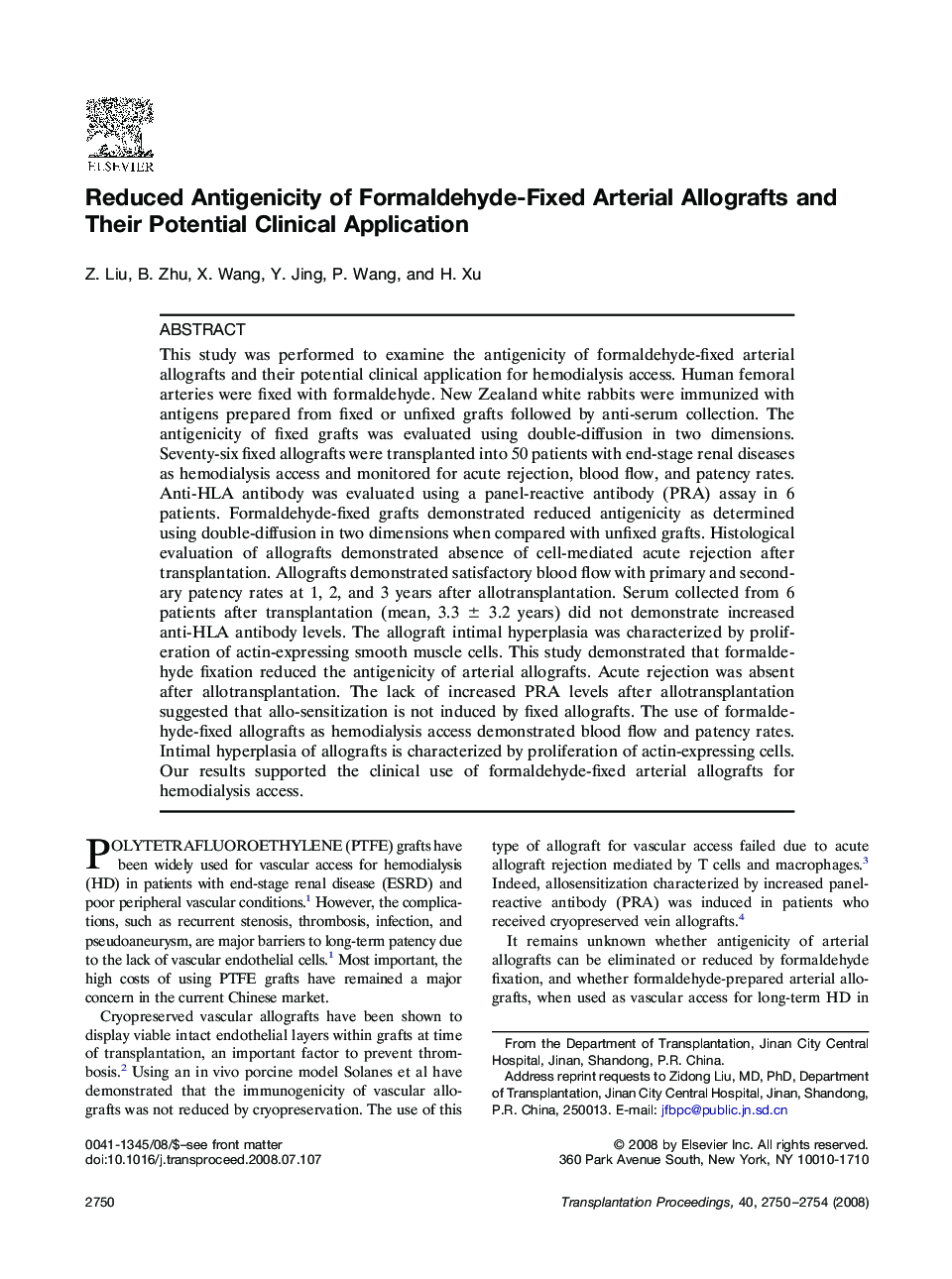| Article ID | Journal | Published Year | Pages | File Type |
|---|---|---|---|---|
| 4262049 | Transplantation Proceedings | 2008 | 5 Pages |
This study was performed to examine the antigenicity of formaldehyde-fixed arterial allografts and their potential clinical application for hemodialysis access. Human femoral arteries were fixed with formaldehyde. New Zealand white rabbits were immunized with antigens prepared from fixed or unfixed grafts followed by anti-serum collection. The antigenicity of fixed grafts was evaluated using double-diffusion in two dimensions. Seventy-six fixed allografts were transplanted into 50 patients with end-stage renal diseases as hemodialysis access and monitored for acute rejection, blood flow, and patency rates. Anti-HLA antibody was evaluated using a panel-reactive antibody (PRA) assay in 6 patients. Formaldehyde-fixed grafts demonstrated reduced antigenicity as determined using double-diffusion in two dimensions when compared with unfixed grafts. Histological evaluation of allografts demonstrated absence of cell-mediated acute rejection after transplantation. Allografts demonstrated satisfactory blood flow with primary and secondary patency rates at 1, 2, and 3 years after allotransplantation. Serum collected from 6 patients after transplantation (mean, 3.3 ± 3.2 years) did not demonstrate increased anti-HLA antibody levels. The allograft intimal hyperplasia was characterized by proliferation of actin-expressing smooth muscle cells. This study demonstrated that formaldehyde fixation reduced the antigenicity of arterial allografts. Acute rejection was absent after allotransplantation. The lack of increased PRA levels after allotransplantation suggested that allo-sensitization is not induced by fixed allografts. The use of formaldehyde-fixed allografts as hemodialysis access demonstrated blood flow and patency rates. Intimal hyperplasia of allografts is characterized by proliferation of actin-expressing cells. Our results supported the clinical use of formaldehyde-fixed arterial allografts for hemodialysis access.
